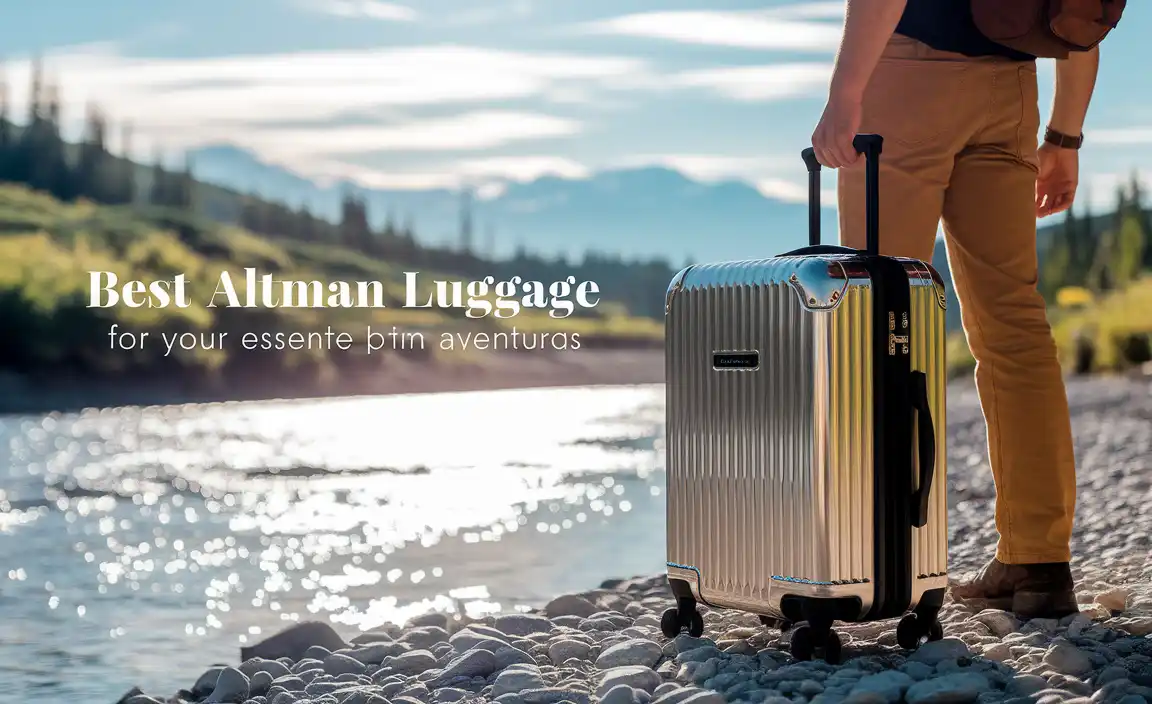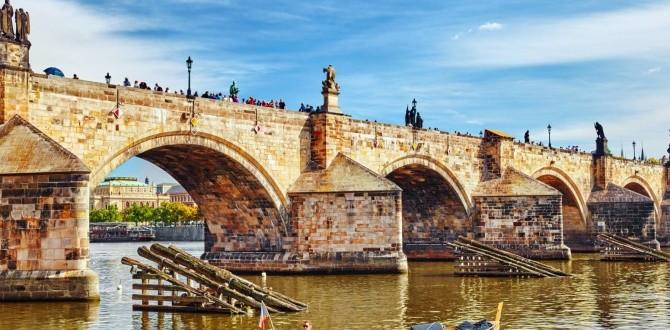Plan your Bergen shoulder season trip for stunning scenery without the peak summer crowds and often with better prices. This guide covers the best times to visit, what to pack, essential activities, and tips for a comfortable, memorable Norwegian adventure.
Planning a trip to Bergen can feel a little overwhelming, especially if you’re aiming for the sweet spot between the busy summer months and the colder winter. Many travelers wonder when is the best time to experience Bergen’s charm without facing long queues or breaking the bank. It’s a common puzzle, balancing weather, crowds, and costs. But don’t worry! We’re going to break down how to plan the perfect Bergen shoulder season trip, step-by-step. Get ready to discover hidden gems and enjoy this beautiful Norwegian city at its best.
Why Shoulder Season is Perfect for Bergen
The “shoulder season” refers to the periods just before and after the peak tourist season. For Bergen, this typically means April to May and September to October. These months offer a delightful blend of good weather, fewer tourists, and more affordable travel options. The dramatic landscapes surrounding Bergen are just as breathtaking, and you’ll find it easier to immerse yourself in the local culture without feeling rushed.
Advantages of a Bergen Shoulder Season Trip
Fewer Crowds: Enjoy popular attractions like the Hanseatic Wharf (Bryggen) and Fløyen with more space and a more relaxed atmosphere.
Lower Prices: Flights and accommodation can often be more budget-friendly compared to the peak summer months.
Pleasant Weather: While changeable, the weather can be surprisingly mild and beautiful, with vibrant spring colors or stunning autumn foliage.
Authentic Experience: Interact more easily with locals and experience Bergen’s genuine charm.
Beautiful Scenery: The surrounding fjords and mountains are spectacular in both spring and autumn.
When to Visit Bergen in the Shoulder Season
Bergen’s shoulder seasons offer distinct experiences. Choosing between spring and autumn depends on your preferences.
Spring (April – May)
Spring in Bergen is a time of awakening. The snow melts, flowers begin to bloom, and the city comes alive after the winter months.
April: Expect cooler temperatures, with averages around 7-10°C (45-50°F). Daylight hours are increasing significantly. There’s a chance of lingering snow in the higher elevations around the city.
May: This is often considered one of the best months. Temperatures rise to an average of 10-15°C (50-59°F). The city is lush and green, and outdoor activities become more inviting. National Day celebrations on May 17th are a vibrant cultural experience.
Autumn (September – October)
Autumn in Bergen brings a spectacular display of colors and a cozy atmosphere.
September: The weather is often still mild, with average temperatures around 10-14°C (50-57°F). The leaves begin to turn, creating a picturesque landscape. Tourist numbers start to decrease noticeably.
October: This month sees cooler temperatures, averaging 6-9°C (43-48°F), and shorter daylight hours. The scenery can be dramatic with mist and rain creating a moody, atmospheric beauty. It’s a great time for indoor museums and cozy cafés.
Planning Your Bergen Itinerary: Essential Steps
A little planning goes a long way for a stress-free trip. Here’s a step-by-step guide to organizing your Bergen shoulder season adventure.
Step 1: Book Flights and Accommodation
Secure your travel arrangements early, especially if you’re traveling in late May or early September, which can sometimes bridge into slightly busier periods.
Flights: Search for flights to Bergen Airport (BGO). Many European cities offer direct or one-stop connections.
Accommodation: Bergen offers various options, from hotels and guesthouses to apartments.
Hotels: Look for options in the city center for easy access to attractions.
Apartments/Airbnb: Great for families or longer stays, offering more space and kitchen facilities.
Hostels: Budget-friendly choices for solo travelers.
Consider booking accommodation with excellent reviews regarding cleanliness and comfort, especially if you require specific amenities for personal care, ensuring a reliable and pleasant stay.
Step 2: Create a Flexible Itinerary
While it’s good to have a plan, Bergen’s weather can be unpredictable. Build in flexibility.
Must-See Attractions: Prioritize key sites like Bryggen, the Fløibanen funicular, and the Fish Market.
Day Trips: Plan for excursions to the fjords (e.g., Sognefjord or Hardangerfjord).
Indoor Activities: Include museums like the Hanseatic Museum or KODE Art Museums as backups for rainy days.
Pacing: Don’t overschedule. Allow time for spontaneous exploration and relaxing in local cafes.
Step 3: Pack Smart for Varied Weather
Layering is key for Bergen. The weather can change quickly, so be prepared for sun, rain, and wind.
Base Layers: Moisture-wicking tops made of merino wool or synthetic materials.
Mid-Layers: Fleece jackets or sweaters for warmth.
Outer Layer: A waterproof and windproof jacket is essential.
Bottoms: Comfortable, quick-drying trousers. Jeans can take a long time to dry if they get wet.
Footwear: Waterproof and comfortable walking shoes or hiking boots are a must. Consider bringing a second pair in case one gets soaked.
Accessories: A warm hat, gloves, and a scarf are advisable, especially for early mornings, evenings, or higher elevations. An umbrella can also be useful.
For Family Travelers: If traveling with children, think about packing extra layers for them, and items that can provide comfort and security, such as favorite toys or child diapers if needed for younger children or for longer excursions where access to facilities might be limited. Ensuring kids are comfortable is paramount for an enjoyable family trip.
For Adults with Specific Needs: For adults who may require adult diapers or protective underwear for extended travel days or peace of mind during long journeys, packing discreet and comfortable options is important. Brands often offer highly absorbent and skin-friendly products suitable for travel, ensuring confidence and freedom to explore.
Step 4: Plan Transportation
Getting around Bergen and its surroundings is relatively easy.
Within the City: Bergen is very walkable. Most attractions in the city center are close to each other.
Public Transport: Besides walking, Bergen has a good bus system. You can purchase single tickets or day passes.
Fløibanen Funicular: This takes you up Mount Fløyen for stunning city views.
Airport Transfer: The Flybussen airport bus is a convenient way to get to and from Bergen Airport (BGO).
Fjord Tours: Bookings for fjord cruises or bus tours are readily available and can depart directly from Bergen.
Step 5: Budget for Your Trip
Norway can be an expensive destination, but shoulder season travel can help.
Accommodation: Varies greatly, but expect to pay more for central locations.
Food: Eating out can be pricey. Supermarkets offer more affordable options for snacks and picnics.
Activities: Funicular rides, museum entries, and fjord tours add up. Look for city passes that might offer savings.
Transportation: Factor in airport transfers, local transport, and any day trip costs.
Estimated Shoulder Season Costs (Per Person, Per Day, Excluding Flights)
This is a general estimate and can vary significantly based on your travel style.
| Category | Budget Traveler (NOK) | Mid-Range Traveler (NOK) | Comfort Traveler (NOK) |
|---|---|---|---|
| Accommodation | 400 – 800 | 900 – 1500 | 1600+ |
| Food | 300 – 500 | 500 – 800 | 800+ |
| Activities & Transport | 200 – 400 | 400 – 700 | 700+ |
| Total Daily Estimate | 900 – 1700 | 1800 – 3000 | 3100+ |
Note: 1 USD is approximately 10-11 NOK (as of late 2023 / early 2024). Always check current exchange rates.
Top Things to Do in Bergen During Shoulder Season
Bergen offers a wealth of experiences year-round. Here are some highlights perfect for your shoulder season visit.
Explore Bryggen (Hanseatic Wharf)
This UNESCO World Heritage site is Bergen’s most iconic landmark. Wander through the narrow alleyways of the preserved wooden buildings, imagining life during the Hanseatic League’s era. Many of the buildings now house shops, galleries, and restaurants.
Visiting Bryggen in the shoulder season means you can often enjoy its charm without the bustling crowds that fill the narrow lanes in summer. This allows for a more intimate experience and better photo opportunities.
Ride the Fløibanen Funicular
Take a scenic ride up Mount Fløyen for panoramic views of Bergen, its surrounding islands, and the fjords. At the top, you can enjoy walking trails, a restaurant, and beautiful viewpoints. The crisp air and changing foliage (in autumn) or emerging greenery (in spring) make for a stunning vista.
Visit the Fish Market (Fisketorget)
While the market is most famous in summer, it still operates year-round, offering fresh seafood, local produce, and souvenirs. In the shoulder season, it’s a more laid-back experience, allowing you to chat with vendors and sample local delicacies without feeling rushed.
Discover Bergen’s Museums
When the weather turns, Bergen’s excellent museums provide cultural immersion.
- KODE Museums: A complex of four art museums housing a vast collection of Norwegian art, including works by Edvard Munch and Nikolai Astrup.
- Hanseatic Museum and Schøtstuene: Learn about Bergen’s rich Hanseatic history.
- Bryggens Museum: Showcases archaeological finds from the Bryggen area.
- Bergen Maritime Museum: Explores Norway’s seafaring heritage.
These indoor attractions are perfect for any day, especially if you encounter a typical Bergen drizzle.
Take a Fjord Cruise
Experiencing the breathtaking Norwegian fjords is a must. Several companies offer tours from Bergen that take you through stunning scenery. The “Norway in a Nutshell” tour, for example, can be adapted for different seasons.
A popular route is a boat trip to the Sognefjord, the “King of Fjords.” You can also opt for shorter cruises into nearby fjords like Osterfjorden or Moldefjorden.
Consider booking tours that depart from Bergen for convenience. Websites like Norway’s Best provide excellent options for planning fjord excursions.
Walk Through Nordnes Peninsula
This charming peninsula offers picturesque wooden houses, narrow streets, and lovely coastal walks. It’s a great place to experience the local residential areas and escape the more tourist-heavy spots.
Enjoy a Coffee and Pastry
Bergen has a thriving café culture. On a cooler or rainy day, find a cozy spot, order a traditional Norwegian “skillingsbolle” (cinnamon bun), and enjoy a warm drink. It’s a perfect way to soak in the local atmosphere.
Essential Travel Tips for Bergen
To make your trip even smoother, keep these practical tips in mind.
Embrace the Weather
Bergen is known for its rain. Don’t let it deter you! Pack good waterproof gear, and you’ll find that the city and its surroundings are beautiful even in misty or drizzly conditions. Many locals say, “There’s no such thing as bad weather, only inappropriate clothing.”
Comfortable Walking Shoes are Non-Negotiable
You’ll be doing a lot of walking, often over cobblestone or uneven surfaces. Prioritize comfort and water resistance.
Learn a Few Norwegian Phrases
While most Norwegians speak excellent English, knowing a few basic phrases like “Takk” (Thank you) and “Hei” (Hello) is always appreciated.
Be Mindful of Daylight Hours
In the shoulder seasons, daylight hours are decreasing (especially in October) or increasing (in April/May). Plan your outdoor activities accordingly.
Consider a Bergen Card
If you plan to visit many museums and use public transport, a Bergen Card might offer good value. It includes free entry to most museums, free public transport within the city, and discounts on other attractions.
Food and Drink Considerations
As mentioned, eating out can be expensive. To save money:
- Buy groceries from supermarkets like REMA 1000, Kiwi, or Coop for snacks, lunches, and picnic items.
- Look for “dagens rett” (dish of the day) deals at restaurants.
- Pack a reusable water bottle; tap water in Norway is excellent and safe to drink.
Travel with Personal Comfort Items
For a truly stress-free trip, especially when traveling with children or specific personal needs, consider packing comfort items. This might include items like child diapers for convenient diaper changes on the go, or adult diapers for personal hygiene and confidence during longer travel days. Having these essentials readily available can make a significant difference in managing daily activities and ensuring everyone is comfortable and secure throughout your adventure.
Sample Bergen Shoulder Season Itinerary (4 Days)
This is a flexible example; adjust it based on your interests and pace.
Day 1: Arrival and Hanseatic Charm
Arrive at Bergen Airport (BGO).
Take the Flybussen to your accommodation.
Check in and leave luggage.
Explore Bryggen, the Hanseatic Wharf.
Enjoy dinner at a restaurant in the Bryggen area or downtown.
Day 2: Mountain Views and City Exploration
Morning: Ride the Fløibanen funicular up Mount Fløyen. Enjoy the views and a short walk.
Lunch: Pack a picnic to enjoy at Mount Fløyen or have lunch at the cafe there.
Afternoon: Explore the Fish Market. Visit the Hanseatic Museum and Schøtstuene.
Relax in a cozy café.
Day 3: Fjord Adventure
Full Day: Take a pre-booked fjord tour from Bergen. Options include a cruise to the Sognefjord or a tour of the nearby islands and fjords.
Evening: Dinner in the city. Consider trying a restaurant with traditional Norwegian cuisine.
Day 4: Art, Culture, and Departure
Morning: Visit one of the KODE art museums or the Bergen Maritime Museum.
Last-minute souvenir shopping.
Lunch in the city.
Head back to Bergen Airport (BGO) for your departure.
Frequently Asked Questions About Bergen Shoulder Season
Here are some common questions about planning a trip to Bergen during the shoulder months.
Q1: Is the weather in Bergen very bad during the shoulder season?
A1: Bergen is known for rain year-round, including the shoulder season. However, it’s often light rain or drizzle interspersed with partly sunny periods. Temperatures are generally mild, making it pleasant for exploration if you’re prepared with waterproof clothing.
Q2: Are attractions open during the shoulder season in Bergen?
A2: Yes, most major attractions, museums, and restaurants in Bergen are open year-round. Some minor seasonal attractions or tours might have reduced hours or cease operations, but the main highlights remain accessible.
Q3: Is it cheaper to visit Bergen in the shoulder season?
A3: Generally, yes. Flights and accommodation prices tend to be lower than in the peak summer months (June-August). This makes the shoulder season an excellent time for budget-conscious travelers.
Q4: What should I wear if I visit Bergen in April or October?
A4: Layering is essential. Pack a waterproof and windproof outer jacket, warm mid-layers (like fleece or wool sweaters), moisture-wicking base layers, comfortable waterproof walking shoes or boots, a hat, and gloves. An umbrella is also recommended.
Q5: Can I still see the Northern Lights in Bergen during the shoulder season?
A5: It’s highly unlikely to see the Northern Lights from Bergen itself. Bergen’s southern latitude and frequent cloud cover are not ideal. For the best chance of seeing the Aurora Borealis, you would need to travel much further north in Norway, typically during the winter months.
Q6: Are there enough activities to do in Bergen during the shoulder season?
A6: Absolutely! Bergen offers numerous indoor activities like world-class museums and cozy cafes, alongside outdoor adventures like hiking





